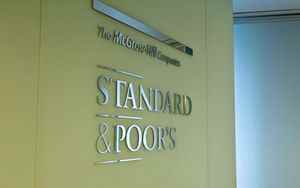(Finance) – The shock of the invasion of Ukraine is a turning point in the credit cycle. For this reason S&P Global Ratings credit prospects are expected to deteriorate, lending conditions will tighten and a default rate to rise to 2.5% by the end of the year. This is what emerges from the report “Credit Conditions Europe Q2 2022: Seismic Shocks, Security & Supply” published by the agency.
Energy security, further disruptions in supply chains and increased inflationary pressures are the risk factors most likely to affect S&P European credit conditions in the next months. The agency expects an inversion of the trend of improvement in credit quality, which has been underway for 14 months, due to the slowdown in growth and greater pressures on production costs, which will weigh more and more on the margins of companies over the course of the year. . Financing conditions in Europe should tighten as central banks enter tightening mode to counter high inflationary pressures, despite the slowdown in growth, the report stresses.
In the’Macroeconomic Outlook the rating agency reviews GDP growth for the Eurozone is down. For S&P the figure will stand at + 3.3%, well 1.1 percentage points less than previous forecasts. Inflation is also expected to rise to 5% from the previous 3%. “At this stage – reads the report – it seems that the European economy can withstand the conflict in Ukraine, but not without consequences for growth and inflation”.
Worst the picture for the Russia that this year, according to the last S&P report on emerging economies of Europe and the Middle Eastwill accuse one economic recession of 8.5% due to the sanctions imposed by the US and EU countries following the invasion of Ukraine. For the country, S&P expects a recovery limited to 0.3% of GDP in 2023, + 1% in 2024 and + 1.3% in 2025. Underlining the high degree of uncertainty on the forecasts, the agency defines that of Russia the most serious collapse in 30 years, or from -14.5% in 1992, recorded coinciding with the transition from the Soviet-era bread-making economy to the market economy. S&P recalls that massive capital outflows occurred after the sanctions, forcing the Russian central bank to suddenly raise interest rates from 9.55% to 20% and enact restrictive measures on capital movements. “These measures – reads the report – seem to have stabilized the banking sector and the ruble for now and the currency has recovered part of the losses”. However, the depreciation will also translate into higher domestic inflation which is forecast at 16% this year, while the sentiment shock will imply a decline in investment.
